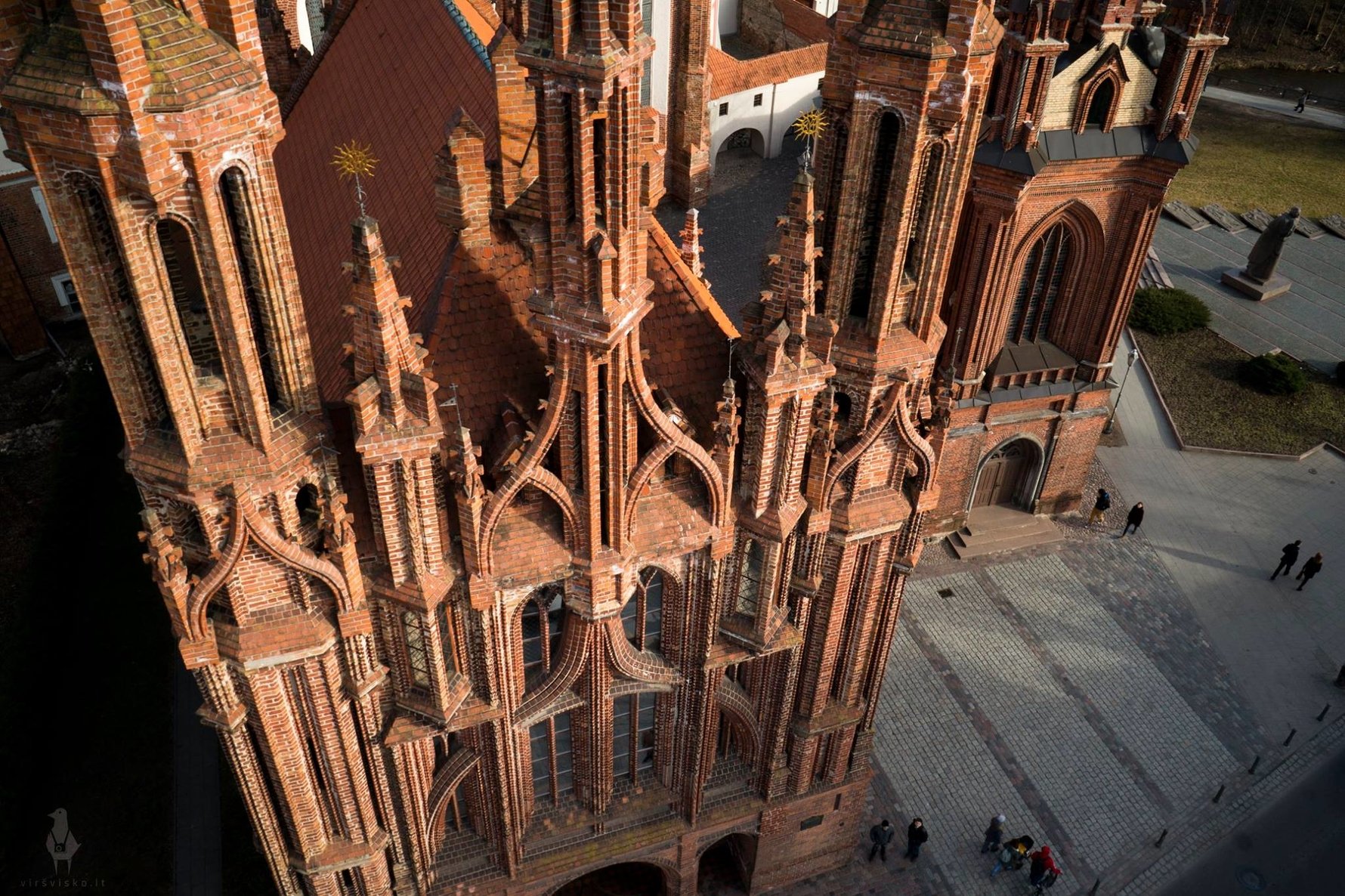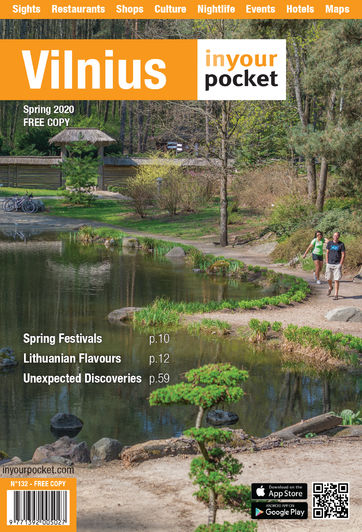The earliest of these styles that can be seen in the city is Gothic, which dominated during and after the country’s conversion to Christianity in 1387. One beautiful building that actually predates this is the Church of St Nicholas (Šv. Mikalojaus 4), which sits in an old courtyard in the Old Town and was built by German merchants in the early 1300s.
The city’s most famous examples of Gothic are located next to each other – flamboyant St Anne’s (Maironio 8), which more than 300 years after it was consecrated Napoleon said he wanted to take back to Paris on the palm of his hand, and the Bernardine Church (Maironio 10) behind it. As it has had several alterations over the years, this last church also has recognisable Baroque features, such as the scrolls at the top of its façade.
There was a brief flowering of Renaissance architecture in Lithuania, examples being Biržai Castle in the north of the country and, in Vilnius, St Michael’s Church (Šv. Mykolo 9) close to St Anne’s, and the delightful Alumnatas courtyard off Universiteto Street.

Gorgeous Baroque
But it was Baroque that came to dominate the Vilnius skyline. Coming from Italy via Poland, this elaborate style wound its theatrical tentacles into virtually every important structure created in the 17th and 18th centuries.
More than 20 churches in Vilnius were either built or renovated in the style, most of which have miraculously survived the tumultuous centuries. Their stucco surfaces and richness of form gave the city a special feeling of warmth and dynamism. Among other buildings the cathedral was remodelled, and although much did not survive a later alteration into Classicism, one part of it can still be marvelled at – St Casimir’s Chapel, towards the back on the right-hand side. The intricate decoration is by Constantino Tencalla (1610-47), a sculptor who had worked on St Peter’s in Rome before heading north to work for the Polish royal court.
Influenced by Michelangelo, he combined the decorative properties of marble with architectural form and was one of the most prominent young artists willing to work outside Italy. Before his early death in Warsaw, he lent his skills to adorn also the stunning interior of St Theresa’s (Aušros Vartų 14) as well as several palaces in the capital of the Polish-Lithuanian Commonwealth.
A brutal 13-year war with Russia erupted soon afterwards in which Vilnius was captured, pillaged and burned in the 1650s, many of its buildings and monuments destroyed, its population massacred. But this led to another flowering of the Baroque style as repairs got underway. It was during this stage that the Church of St Peter & St Paul (Antakalnio 1) was rebuilt, with its gorgeous interior lavishly decorated by Italians in countless stucco sculptures of figures, faces and symbols. Today, seeing this building is absolutely one of the highlights of many people’s stays in Lithuania.
In the 1700s, an architect whose work had a huge impact on the look of the city was Jan Krzysztof Glaubitz (1700-67), who came from the western Polish region of Silesia. At a time when Baroque was developing into Rococo, he rebuilt a number of churches after a devastating fire, including magnificent St John’s (whose façade can be seen from inside Vilnius University), St Catherine’s (Vilniaus 30), the forlorn but still striking Church of the Ascension of the Lord (Subačiaus 26), the towers of the Holy Trinity Church (Aušros Vartų 7b) and the impressive Basilian Gate at the bottom of Aušros Vartų Street. Glaubitz is probably the single architect most closely associated with the overall image of Vilnius, and his work is responsible for the term Vilnius Baroque.
Classical antiquity
The next style to have a major influence on the city was Classicism, the spread of which was assisted by the university’s department of architecture, opened in the second half of the 18th century. One of the key figures there was the professor Martin Knackfus (1740-1821), who designed the sprawling Verkiai Palace, two wings of which survive today, and the university’s Astronomical Observatory.
One of his Lithuanian students, Laurynas Stuoka-Gucevičius (1753-1798) became even more renowned, creating the Town Hall (Didžioji 31), the one-of-a kind rotunda church in the nearby town of Sudervė, the present-day look of the cathedral, which was remodelled after a Greek temple, and other unique structures.
Both Knackfus and Stuoka-Gucevičius were caught up in the events of their time and got involved in the Kościuszko Uprising, an ultimately doomed attempt in 1794 to liberate the Polish-Lithuanian Commonwealth from Russian influence. Stuoka-Gucevičius was one of the leaders of a local militia and was wounded during a battle with a Russian garrison. The Classical style continued to dominate until well into the 19th century, with local architects designing mansions in the style on streets like Trakų and Pylimo. Since then other styles have come and gone. Thankfully Vilnius continues to be known as a Baroque city, the scrolls and flourishes of this exuberant style giving the city its unique character.





Comments